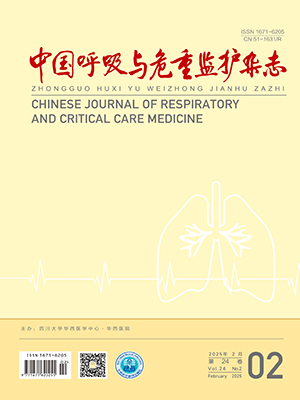Objective To investigate the diagnostic value of strain elastography (SE) and virtual touch tissue image quantification (VTIQ) technique in determining the nature of cervical lymph nodes in patients with lung cancer. Methods A total of 124 patients with lung cancer combined with cervical lymph node enlargement were selected for this study. All patients underwent routine ultrasound examination, using SE to detect lymph nodes and scored them, and using VTIQ technique fro measurement of lymph node shear wave velocity (SWV). Pathological results were taken as gold standards. Non-metastatic lymph nodes were included in the benign group, while metastatic lymph nodes were included in the malignant group. Receiver operating characteristic (ROC) curve was generated. The optimal cutoff value of SWV was determined for predicting metastatic lymph nodes, the area under curve (AUC) of SE and VTIQ technique was compared, and the diagnostic efficacy of SE and VTIQ technique for benign and malignant lymph nodes was analyzed. Results Among the 124 patients, 28 cases of benign lymph nodes had an SE score of 2 - 3, and 59 cases of malignant lymph nodes had an SE score of 4 - 5. The accuracy, sensitivity, and specificity of SE were 70.2%, 75.6%, and 60.9%, respectively. The maximum, minimum, median, and mean values of SWV in the malignant lymph nodes were significantly higher than those in the benign lymph nodes in VTIQ technique testing (P<0.05). Based on the ROC curve analysis, the mean value of SWV had the highest diagnostic efficiency, and its cutoff value of 3.18 m/s was used as the diagnostic criterion for predicting malignant lymph nodes. The accuracy, sensitivity, and specificity of the VTIQ technique in diagnosing malignant lymph nodes were 85.5%, 92.3%, and 73.9%, respectively. The AUC of SE and VTIQ technique were 0.713 and 0.896, respectively, indicating higher diagnostic value of VTIQ technique. Conclusions Both SE and VTIQ technique have high accuracy in determining the nature of cervical lymph nodes in lung cancer patients. Compared with SE, VTIQ technique showed superior diagnostic performance, and SWVmean has the best diagnostic performance. It can provide a new non-invasive examination method for evaluating the nature of cervical lymph nodes in lung cancer patients in clinical practice.
Citation:
WANG Yan, XU Chunhua, LI Li, YUAN Qi. The value of strain elastography and virtual touch tissue image quantification technique in assessing the nature of cervical lymph nodes in patients with lung cancer. Chinese Journal of Respiratory and Critical Care Medicine, 2024, 23(6): 395-399. doi: 10.7507/1671-6205.202402033
Copy
Copyright © the editorial department of Chinese Journal of Respiratory and Critical Care Medicine of West China Medical Publisher. All rights reserved
| 1. |
|
| 2. |
|
| 3. |
|
| 4. |
|
| 5. |
|
| 6. |
|
| 7. |
|
| 8. |
张武. 现代超声诊断学. 北京: 科学技术文献出版社, 2008, 89.
|
| 9. |
|
| 10. |
|
| 11. |
|
| 12. |
|
| 13. |
|
| 14. |
|
| 15. |
|
| 16. |
|
| 17. |
|
| 18. |
|
| 19. |
|
| 20. |
|
| 21. |
|
| 22. |
|
| 23. |
|
| 24. |
|
| 25. |
|
| 26. |
|
- 1.
- 2.
- 3.
- 4.
- 5.
- 6.
- 7.
- 8. 张武. 现代超声诊断学. 北京: 科学技术文献出版社, 2008, 89.
- 9.
- 10.
- 11.
- 12.
- 13.
- 14.
- 15.
- 16.
- 17.
- 18.
- 19.
- 20.
- 21.
- 22.
- 23.
- 24.
- 25.
- 26.




